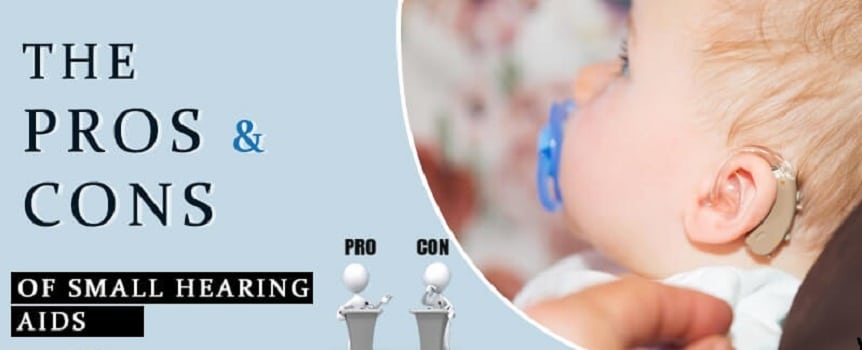The Pros and Cons of Small Hearing Aids

In this era, various types, styles, and manufacturers of hearing aids are available to select a comfortable hearing device. Small hearing aids are an available custom style that can be completely-in-the-canal and invisible in the canals. Both styles are fitted inside the ear.
When your doctor restricts you from wearing a small and custom-fitted hearing aid, you can choose other styles of hearing aids such as behind-the-ear (BTE) hearing aid, Receiver-in-the-ear (RITE) hearing aid Companies like Blue Angels Hearing offer behind-the-ear rechargeable hearing aids that are nearly invisible and fit even if you have glasses. and receiver-in-the-canal (RIC) hearing aid.. This device is connected to a very thin unnoticeable clear tube. The color of the device is designed similar to skin and hair color. A RIC and RITE hearing device is a lightweight, comfortable, and easy to use device, and is comfortable for those who don’t want or like visible hearing aids. There are various Pros and Cons of small hearing aids.

Pros
- Small hearing aids are attractive in style, and these small hearing aids are approximately invisible in the canal. It does not have any external tubes or wires, and it is lightweight and comfortable to the ear.
- The position of the small hearing aid in the ear makes it easy to use, and the ear protects it from the wind as well as is comfortable during outdoor activities.
- It helps hear more natural sounds than other hearing aids. Its location in the ear protects it from damage and reduces the occlusion effect. This device needs less power to transmit sound.
- It improves conversion and understanding of speech. It is useful for starting, stopping, and amplifying high pitch sound, which is common in conversations.
- It has targeted amplification of a specific sound which you want to try to focus on.
- Small hearing aids are available in various varieties of styles and configurations.
Cons
- It is not comfortable for people who have a severe problem or high level of hearing loss. It does not completely fit in people’s ear canal who have small and differently shaped ear canal.
- This type of hearing aid has a small battery life, and you need to charge them quite frequently. The life of the battery in a small hearing aid is 61 to 98 hours.
- It provides limited features and doesn’t have a directional microphone.
- It does not have a feature to remove background noise, and because of this, people face problems in crowded places such as in noisy restaurants, family gathering, and while traveling in public transport.
- The controls of small hearing aids are hard to see and feel, and replacing the battery is not easy. It is also not comfortable for those who have vision and dexterity problem.
- Small hearing aids are more costly than other styles of hearing aids.
- Due to their small size, you may get a problem in cleaning and maintaining the device such as removing earwax.
While purchasing a suitable hearing device, consult a hearing health professional or an audiologist. The previously mentioned points are not composed for any sort of discouragement. There are various types of individuals with various ear structures and with differing hearing loss. Distinctive hearing devices suit different individuals, for instance, the individuals who need behind the ear amplifier utilize Receiver-in-the canal (RIC) or Receiver-in-the ear (RITE) as their little size is exceptionally comfortable when worn.
They come in various colors and furthermore contain almost invisible tube. They are best for individuals who have extreme deafness. These lightweight hearing gadgets are anything but difficult to deal with.
